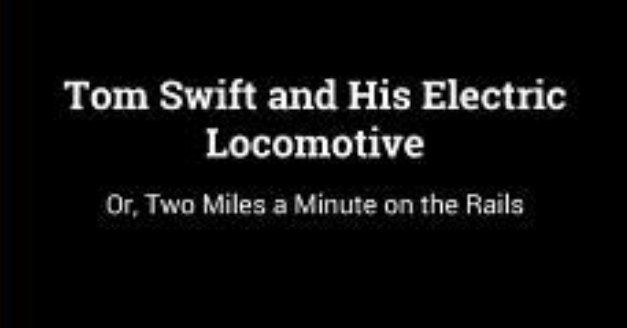CHAPTER VII — Tom Swift and His Electric Locomotive
byCHAPTER VII – Tom Swift and His Electric Locomotive opens with a candid admission by Tom Swift that he has yet to fully envision the ideal design for a superior electric locomotive. This moment, shared with his father and Ned Newton, reveals not weakness but realism—Tom understands that true breakthroughs come not from rushing invention, but from carefully aligning concept with purpose. He acknowledges the limitations of current designs while expressing confidence in the long-term viability of electric rail systems. Their conversation highlights the many advantages electric locomotion holds over steam: lower operational costs, more predictable performance in adverse weather, and significantly reduced maintenance. These points not only reflect Tom’s thoughtful analysis but also strengthen the case for Mr. Richard Bartholomew’s push toward electrifying his struggling railroad line. The group agrees that while the vision is clear, the road ahead is demanding, especially if they aim to exceed speeds of two miles a minute—an ambitious but not impossible goal.
Motivated by the challenge, Tom decides to travel to Waterfield to continue his research in a quieter setting. Before leaving, he exchanges words with Eradicate Sampson, the long-trusted handyman, and enlists Koku to accompany him on the trip. Koku’s towering presence and earnest confusion about basic tasks add humor to the otherwise serious atmosphere. Tom balances his leadership with patience, reminding Koku of the importance of observation during their travels. The exchange also hints at Tom’s growing awareness that mechanical innovation isn’t his only challenge—human dynamics matter too. While packing, he prepares not just technical notes, but security measures as well, aware of recent disturbances suggesting that his efforts may be under surveillance. This attention to detail, both mechanical and strategic, shows Tom evolving not only as an inventor but as a protector of intellectual integrity.
During their journey, a minor incident on the road takes a darker turn when Tom spots a lone man lurking near the edge of the property. The figure appears familiar, possibly tied to the network of industrial spies trying to derail his project. Tom pretends not to notice but mentally logs the encounter for follow-up. His concern is not panic—it’s calculation. If someone is watching, then they’re already too close. This tension introduces a layer of danger to what was initially just a research trip. The stakes are now split between technical performance and preventing corporate sabotage. Though no confrontation occurs, the moment shifts the tone, turning Tom’s routine travel into a mission that might involve more than engineering.
Once settled in Waterfield, Tom reviews his blueprints and sketches, looking for ways to improve motor efficiency and streamline the power-feed system. Inspiration often comes to him during such retreats, far from the pressures of the lab. He adjusts a few design parameters, sketching possible changes to gear ratios and braking mechanisms. In the background, Koku maintains a careful watch—comically enthusiastic, but alert nonetheless. Tom’s ability to blend cutting-edge innovation with forward-thinking security measures reinforces the growing complexity of his project. It’s no longer just about beating steam power—it’s about beating those who fear change.
The chapter ends on a note of rising suspense. Though Tom remains composed, the reader is left with the sense that challenges ahead may come as much from shadows as from circuits. As the Hercules 0001 continues its slow evolution from concept to physical reality, Tom’s world expands beyond machines into the terrain of strategy, trust, and resilience. The mystery man in the woods may return, or he may already be watching from somewhere closer. Either way, Tom Swift is preparing—not just to build the fastest locomotive the world has ever seen, but to defend it from those who would rather see it fail.

